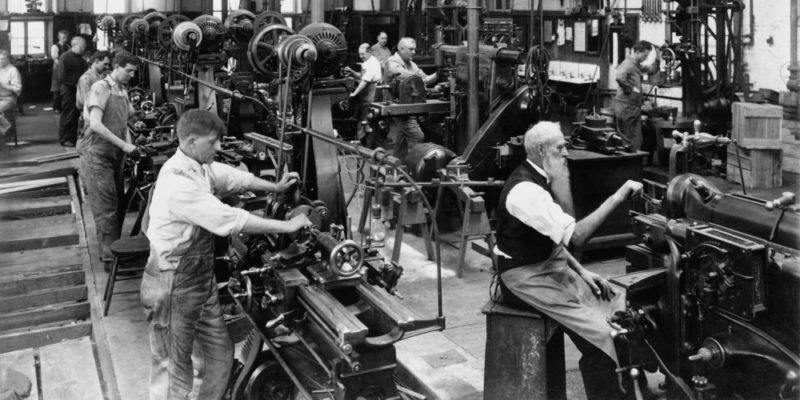We explain what management is, its history and objectives. In addition, we discuss public administration and more.

What is management?
Management is a process that involves multiple actions, such as planning tasks and projects, organizing available resources, setting priorities, and controlling operations to achieve objectives. Management can be applied at a personal, business or governmental level.
- For example: On a personal level, one can manage weekly tasks (study, work, and household chores) in order to manage to accomplish them all. At the workplace, managing a business involves managing human resources, allocating physical resources, and planning different tasks.
Whether it is a household, a project, or an organization, managing calls for various resources, both human and physical. However, what characterizes the administration process are certain basic common elements: designating a manager or leader, planning objectives, organizing human resources and distributing tasks, evaluating results, and motivating people.
The word “administration” derives from Latin: the prefix ad meaning “towards” or “acquire” and the word minister meaning “obedience” or “subordinate”, and makes reference to the fact that it is carried out under the command or subordination of another. A group or team follows the guidelines laid down by the administration or responsible person as administrator.
- See also: Management control
History of management

Overview of the main stages in the history of management:
- Origin of management. The management process has existed since prehistoric times, when humans started to live in tribes and settlements engaging in farming and animal breeding. Although it was a very different process from what it is today, tasks were divided to organize community life, provide food, and protect against predators and weather conditions.
- Origin of writing. Writing emerged in ancient Mesopotamia, around the year 3000 BC, leaving evidence of complex administrative systems implemented by great civilizations.
- Feudalism. Feudalism developed during the Middle Ages, between the 5th and 15th centuries AD, a system in which landowners, who belonged to a minority upper class, allocated part of their land to be worked by serfs. Feudal lords traded the products of the land and gave servants a house and military protection in exchange for their work.
- Mercantilism. It was an economic system that developed in Europe between the 17th and mid-18th centuries and which marked a transition from feudalism to capitalism. Mercantilist ideas were based on the notion that the State should control industry and commerce, by applying customs duties on exports, for example. However, absolute state control helped to perpetuate the dominion of medieval feudal monarchies.
- Capitalism. During the early modern period, between the 15th and 18th centuries, the capitalist system developed in the hands of the bourgeoisie, a well-off, capital-owning middle class. The ideas of Adam Smith, considered the father of modern economics, stood out, which held that the value of goods is determined by the sum of the worker’s wage, the employer's profits, and rents.
- Industrial Revolution. Starting in the 20th century with the beginning of the Industrial Revolution, large companies emerged and set the foundations of business management. The first business schools were created, which made it possible to formalize the process from a technical perspective.
For example, Taylorism was a theory based on the division of labor but applied to industrial mass production to maximize labor productivity. - Late modern period. From 1789 onwards, a period of evolution began and developed at an exponential rate with the ideas of the Enlightenment and the French Revolution, which continues to this day. Technological advances and changes in the global consumer society have had an impact on all aspects of life, including management, which in addition to being a process of internal organization, is influenced by the domestic and foreign markets in which a business operates.
For example, a company exporting its production to foreign countries must have an executive management knowledgeable in foreign trade and be prepared for the differences in the laws and customs regulations abroad.
Management functions
The main functions of the management process in a project or company are:
- Planning. Designing a plan that will determine how to achieve objectives most effectively will serve as a guide for carrying out tasks and projects in a coordinated manner.
- Organizing. Checking human and physical available resources and identifying those that are lacking to organize the structure into specialized areas or departments.
- Directing. Exercising the role of leader or manager responsible for aligning the organization's management or performance with objectives. This role requires a comprehensive view of available and necessary resources, expenses, and investments, among other variables.
- Controlling. Evaluating the processes and performance of each area or employee, with the aim of identifying problems or improvements.
Objective of management
Management is an ever-changing process that aims to effectively coordinate human and physical resources to achieve maximum productivity at the lowest possible cost. It is a process of internal organization that is influenced by the context in which the business activity is conducted.
- For example, a national company that develops software and integrated circuits may have difficulties in production during times of economic crisis due to lack of raw materials. In times of drastic currency devaluation, national governments often restrict exports, even for industries.
The management process also takes into account possible problems or crises in order to keep the business active and have available alternative measures.
- For example, faced with a lack of inputs from abroad, a company may create a joint venture with a local producer to manufacture the necessary raw materials.
- See also: Efficacy, efficiency and effectiveness
Public administration
The public administration comprises a set of bureaucratically structured bodies that represent state policy. Its function is to ensure order and social welfare, through the division of national power into the executive, legislative, and judicial branches, performing administrative functions and helping moderate the State’s authority.
The responsibility of every public official is to comply with and enforce the Constitution and its laws in each of the tasks they perform. The bureaucratic structure of public administration is subdivided into operational units with their respective directors and employees in charge.
Related articles:
References
- Educatina (2013). Historia de la administración, segunda parte. Medioevo y Revolución Industrial, (video). Youtube.
- Real Academia Española (2022). Administrar. RAE.
- Ensenada (2019). El mercantilismo: la transición del feudalismo al capitalismo. Historia de Tercero.
Was this information useful to you?
Yes NoThank you for visiting us :)